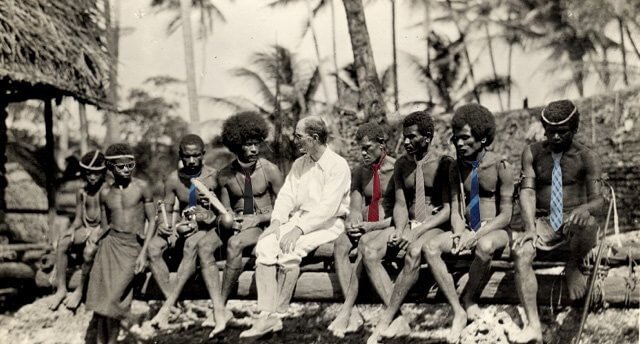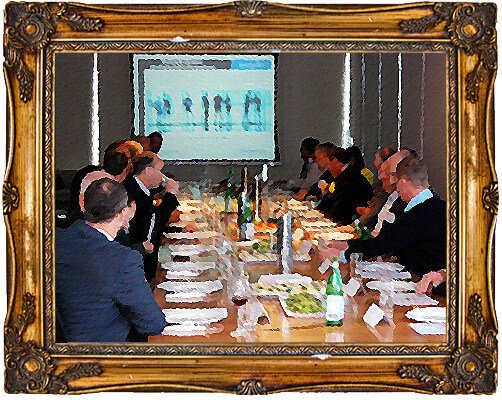The Concealed Utility of Theory In Business

GETTING THINGS DONE: THE CONCEALED UTILITY OF THEORY IN THE WORK OF PRACTICING ANTHROPOLOGISTS
A major driving force in the call for anthropology in business is to help businesses to understand their customers and users in order to create better products, services, and systems that will spur widespread adoption and increase profits. Oliveira suggests that this is “achieved through a process of co-creation designed so that constituencies become materially enmeshed in another’s ontological view” (Sunderland and Denny 2014:21). Anthropologists serve as interlocutors of diverse cultural paradigms, interrogating, recontextualizing, and ultimately enmeshing them in that same “rigorous formulation” that Robinson advocates for in the undertaking to close the gaps in the divergent models and language practices between business and anthropology.
It is unfortunate, then, that theory and analysis is rarely ever given its due credit in business domains. Either out of an assumed requisite of unavailable resources and time – often based on the perception of theory as a luxurious endeavor of pedantically-minded academics – or simply out of a lack of perceived relevance in the work of getting things done. The exclusive purpose of research from the perspective of businesses is to produce straightforward, actionable insights that can inform their near-term decision-making processes. Nevertheless, because theory emerges from the work of getting things done and creating actionable insights regardless, “engagement is at least in part a negotiation of terms” (Denny 2013:140).
In order to meet the expectations of business, practitioners work hard to deliver research findings that have been molded and forged to extract only what is deemed immediately useful. While this results in the unintended consequence of concealing the role and value contribution of both theory and analysis in the work, practitioners are often obligated as a matter of professional relevance and survival to downplay theory in the presentation of their findings to fit business expectations. As Sunderland explains, “many have noted, it can thus be more fruitful to conceptualize industry as a field site where theory is enacted, a site that includes the very real positioning of the researcher as an actor in the proceedings” (Sunderland 2013:132).
ANYBODY CAN DO IT: THE DE-SKILLING OF ANTHROPOLOGY AND ETHNOGRAPHY IN BUSINESS
This dynamic of regarding theory as altogether irrelevant while simultaneously consuming research that is steeped in it has skewed businesses’ perception of anthropology as a discipline and ethnography as a research methodology over time. In their 2006 EPIC paper, “The Real Problem: Rhetorics of Knowing in Corporate Ethnographic Research,” Nafus and Anderson point out that by presenting pictures and quotes of ‘real’ people “as both data and performance of knowledge… a subtext of the presentation then became, take pictures because they show the real, which does not require interpretation or analysis. In this unanticipated way… we down play much of the ‘real’ work that goes into producing an ethnographic representation… as if it were butterfly collecting or train spotting” (Nafus and Anderson 2006:249).
…
Even as the ethnographic toolkit gains in popularity and recognition, it’s practices have been increasingly perceived by business as a straightforward and self-evident process that can easily be illustrated and learned using idealized notions derived from the limited scope of the research findings they are presented with at their own request. Thus, what they perceive to be the sum total of the ethnographic process ignores “the intellectual paths that were forged to produce” those very research findings (Nafus and Anderson 2006:250).
It is easy to see how, as Melissa Cefkin notes in her 2010 EPIC paper, “Practice at the Crossroads: When practice meets the road,” that “the notion of practice in this use shifts from one formed from a situated, dynamic and contested perspective formed relationally between agents and broader social systems, to one arrived at prescriptively, understood to be formed by a cumulative set of individual actions, and which strives for codification, standardization and control” (Cefkin 2010:52). By breaking down ethnography and operationalizing the process by means of what businesses perceive to be a matter of going out and capturing quotes and photographs of ‘real’ people, the role of the anthropologist became something that anybody can reasonably perform (see Nafus and Anderson 2006:247-250; Cefkin 2013:118; Baba 2014:44-56; Morais 2014:472; Wilner 2014:504). Suggesting a sequential and self-evident logic to both practice and lived experiences that only await a researcher to be briefed on the task and sent out to record the data.
The misappropriation of ethnographic practices in this way undermines the purpose of the method and ultimately anthropology’s ability to live up to the true potential of its value-contribution to businesses (more on this later). To be sure, any type of data that is collected can be useful, but as Christina Wasson argues, “a videotape alone cannot answer questions about how, for instance, particular user-product interactions are situated in consumers’ family dynamics, work pressures, and cultural beliefs” (2002:25). Melissa Cefkin suggests that if theorized practice is not vigorously advocated for, at least as part of the process, practitioners may be inadvertently presenting themselves as mere “technicians, problem solvers for addressing immediate issues, rather than holders of vital social and cultural knowledge worthy of broader strategic consideration” (Cefkin 2010:55). For many anthropologists – and especially for students and early-career practitioners looking to work in business – theory and analysis is a survival tactic and an almost defiant form of distinction.
Works Cited
Baba, Marietta L. 2014. “De-Anthropologizing Ethnography: A Historical Perspective on the Commodification of Ethnography as a Business Service.” In Handbook of Anthropology in Business, edited by R. Denny and P. Sunderland, 43-68. New York, London: Routledge.
Cefkin, Melissa. 2010. “Practice at the Crossroads: When Practice Meets Theory, A Rumination.” Proceedings of the 6th Ethnographic Praxis in Industry Conference 2010:46-58.
Cefkin, Melissa. 2013. “The Limits to Speed in Ethnography.” In Advancing Ethnography in Corporate Environments, edited by B. Jordan, 108-121. Walnut Creek, CA: Left Coast Press.
Denny, Rita. 2013. “The Cry of Practicality.” In Advancing Ethnography in Corporate Environments, edited by B. Jordan, 136-50. Walnut Creek, CA: Left Coast Press.
Morais, Robert J. 2014. “In Pursuit of Strategy: Anthropologists in Advertising.” In Handbook of Anthropology in Business, edited by R. Denny and P. Sunderland, 571-587. New York, London: Routledge.
Nafus, Dawn, and Ken Anderson. 2006. “The Real Problem: Rhetorics of Knowing in Corporate Ethnographic Research.” Proceedings of the 2nd Ethnographic Praxis in Industry Conference 2006:244-258.
Sunderland, Patricia and Rita Denny. 2014. “Introduction.” In Handbook of Anthropology in Business, edited by R. Denny and P. Sunderland, 13-32. New York, London: Routledge.
Sunderland, Patricia. 2013. “The Cry for More Theory.” In Advancing Ethnography in Corporate Environments, edited by B. Jordan, 122-35. Walnut Creek, CA: Left Coast Press.
Wasson, Christina. 2002. “Collaborative Work: Integrating the Roles of Designers and Ethnographers.” In Creating Breakthrough Ideas: The Collaboration of Anthropologists and Designers in the Product Development Industry, edited by S. Squires and B. Byrne, 71-90. Westport, CT: Bergin & Garvey.
Wilner, Sarah J.S. 2014. “A Crisis of Representation? Anthropology In The Popular Business Media.” In Handbook of Anthropology in Business, edited by R. Denny and P. Sunderland, 497-520. New York, London: Routledge.
Recommend0 recommendationsPublished in Business Anthropology, Employer Resources




Responses